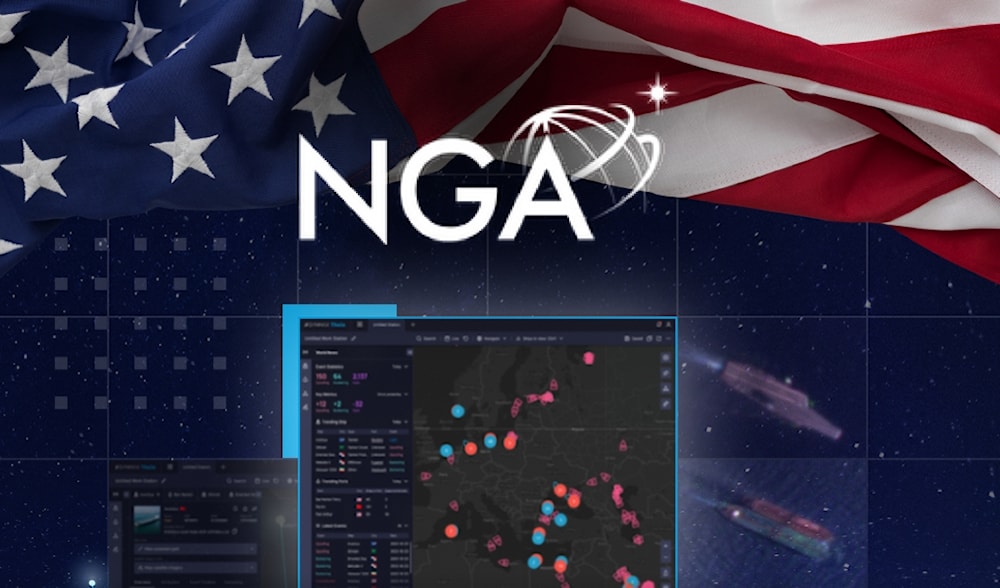US NGA confirms halt of Ukraine’s access to satellite imagery
The US National Geospatial-Intelligence Agency (NGA) has confirmed the temporary suspension of Ukraine’s access to US satellite imagery following Trump’s decision to halt intelligence and weapons transfers.
-

SynMax's maritime domain awareness platform, Theia, has been awarded a pilot project for maritime automated analytics from the US National Geospatial-Intelligence Agency (NGA). (AP)
The US National Geospatial-Intelligence Agency (NGA) confirmed that Ukraine's access to US government satellite images was temporarily halted following President Donald Trump’s decision to suspend intelligence and weapons transfers to Kiev, according to Breaking Defense.
On Friday, Ukraine's Militarnyi news portal reported that Maxar Technologies, a US satellite imagery provider, had stopped providing Ukraine with its satellite data.
A spokesperson for the NGA told Breaking Defense, "In accordance with the Administration’s directive on support to Ukraine, NGA has temporarily suspended access to GEGD, which is the agency’s primary portal for accessing commercial imagery purchased by the US government."
Additionally, Time newspaper reported that Western specialists, who were previously receiving and processing satellite data for Ukraine, had left the country following the suspension of US satellite imagery access.
A source close to Ukraine’s general staff was quoted saying, "There’s no one left," though no further details were provided.
Two unnamed Ukrainian military officials informed Time that some European intelligence agencies had volunteered to "fill the gap" left by the US, but it would take time to deploy their systems, and they likely wouldn't be able to match the US’s intelligence capabilities soon.
On Wednesday, CIA Director John Ratcliffe confirmed media reports that the US had paused intelligence sharing with Ukraine.
UK to maintain intelligence support for Ukraine amid US withdrawal
The UK will continue providing intelligence to Ukraine despite the recent cutoff by the United States, but the more limited capabilities available from London and other European allies will make it difficult to compensate for the intelligence flow that Washington halted earlier this week, The Guardian reported on Friday.
The news website cited sources as saying that the UK will also continue analyzing raw intelligence data before sharing its insights with Ukraine. However, as per standard intelligence protocols, it will not directly relay US-sourced information obtained through longstanding intelligence-sharing agreements between the two nations.
"They are not as far reaching as US capabilities, not at the same scale and not able to take their place," a former Whitehall official noted. Nonetheless, the intelligence Britain provides will still allow Ukraine to maintain some early-warning capabilities and a degree of deep-strike capacity inside Russia.
Reconnaissance data from satellites, ground stations, surveillance aircraft such as Rivet Joint, and even covert ground operations are gathered and combined with open-source intelligence to facilitate deep missile and drone strikes against Russian targets.
No more military aid
Trump has repeatedly stated his intention to end the war in Ukraine and has engaged in preliminary discussions with Russian President Vladimir Putin. At the same time, he has been pressuring Ukrainian President Volodymyr Zelensky to enter peace talks. Senior Trump administration officials are expected to travel to Saudi Arabia next week for discussions with Ukrainian officials, as reported by Fox News and Axios.
On Monday, the US formally announced the suspension of military aid to Ukraine following a White House meeting where the intelligence-sharing ban was also decided. The restriction began to take effect on Wednesday.
Following the intelligence cutoff, reports emerged that US-supplied HIMARS rocket systems were abruptly shut down. The restriction may also impact longer-range ATACMS missiles, though Ukraine’s stockpile of these remains uncertain.
While Ukraine possesses only a limited number of HIMARS launchers, they have played a pivotal role in targeting high-value Russian assets, such as ammunition depots and logistics hubs. Russian forces have actively attempted to hunt down HIMARS units, which frequently relocate to avoid detection.
Ukraine’s military intelligence agency, HUR, also depends on foreign intelligence for sabotage missions inside Russia and real-time updates on Russian bomber deployments.
The agency is believed to have orchestrated the targeted killing of high-ranking Russian military figures, including Lt. Gen. Igor Kirillov, the head of the Russian army’s chemical weapons division. In December, a bomb attached to an electric scooter detonated outside Kirillov’s Moscow apartment, killing him and an aide as they exited the building.

 4 Min Read
4 Min Read








